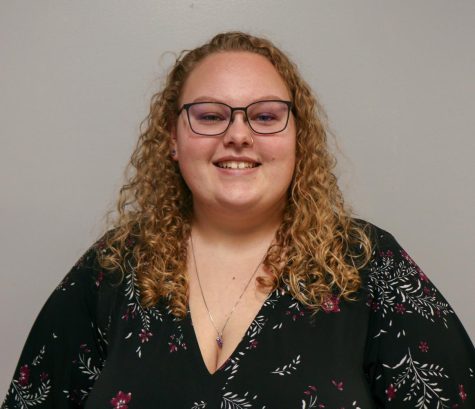What’s happening with Whitney: 4th edition
September 23, 2020
Bayard Rustin once said, “We need, in every community, a group of angelic troublemakers.” I think the members of the LGBTQ+ community are the angelic troublemakers of the world. We will not stand still, and we will not be quiet.
This vast microculture reaches into communities all over the world, whether or not the public is aware of it. According to “Intercultural Communication: A Contextual Approach” eighth edition by James W. Neuliep, the LGBTQ+ microculture is the “most difficult to define and characterize” but the community is one of the “most controversial and politically contested areas of cultural diversity facing us today.”
Each letter of LGBTQ represents a sexual orientation or gender identification, L; represents lesbian, G; represents gay, B; represents bisexual, T; is transgender, and Q represents queer or questioning. Lesbian is used to describe women who are attracted to other women and gay is used to describe a person who is attracted to people of the same sex. People who identify as bisexual are attracted to both genders. Queer is used to describe people whose sexual orientation is not exclusively heterosexual. Questioning is used to describe a person who is questioning their sexual orientation or gender identity. Transgender is used to describe a person whose gender identity and/or gender expression differs from the sex they were assigned at birth.
What we know and love today about the pride flag all started in the late 1970’s. The LGBTQ+ pride flag was created by Gilbert Baker, an artist, designer, Vietnam War veteran, and a previous drag performer in 1978. Harvey Milk, a gay icon and San Francisco politician, asked Baker to create a flag for him for San Francisco’s annual pride parade.
During a 2015 interview with the Museum of Modern Art, Baker said he had been inspired to create a cultural rallying sign for the gay community after noticing the numerous displays of the American flag from the 1976 bicentennial celebrations. The original flag featured eight colors, and each represented a different meaning. According to History.com, “at the top was hot pink, which represented sex, red for life, orange for healing, yellow signifying sunlight, green for nature, turquoise to represent art, indigo for harmony, and finally violet at the bottom for spirit.”
The flag debuted on June 25, 1978, during San Francisco’s Freedom Day Parade. Baker took the flag design to the Paramount Flag Company and had to replace the hot pink and turquoise for blue. After the assassination of Milk on November 27, 1978, the demand for the rainbow flag increased significantly. Baker went the extra mile (literally) and created a mile-long rainbow flag for the 25th anniversaries of the Stonewall Riots and Gay Civil Rights Movement. Baker was able to make the Rainbow 25 Sea-to-Sea Flag with the original eight colors and was debuted on June 15, 2003, in Key West, Florida. The flag was 1.25 miles long and went down in history as the world’s largest flag in the, “Guinness Book of World Records.”
Another fun fact about the LGBTQ+ community is that they allied with the Mafia in the 1960’s to open the Stonewall Inn and created a safe space for their members. You may recognize this name because that is where the gay rights movement really took off after the Stonewall Riots on June 24-28, 1969 at the Stonewall Inn in New York City’s Greenwich Village. This is why National Pride Month is in June. A year later, on June 28, 1970, the first anniversary of the riots at Stonewall Inn, LGBTQ+ activists gathered for a march up 6th Avenue towards Central Park.
These movements and New York’s examples inspired other cities including San Francisco, Boston, Los Angeles and Chicago, to host gay pride celebrations. Stonewall fueled gay rights movements in Canada, France, Australia, Britain, Germany, and New Zealand, among others. In Nebraska, the LGBTQ+ population only constitutes for 3.8% of the state’s population in 2017 according to The Williams Institute, UCLA School of Law.
The Trevor Project is a national organization that provides crisis intervention and suicide prevention services to LGBTQ+ youth. LGBTQ+ youth are almost three times more likely to seriously contemplate suicide. Those who attempted suicide were five times more likely to require medical treatment than those of heterosexual youth. The Centers for Disease Control and Prevention (CDC) reported in a 2015 survey 34% of the LGBTQ+ students polled were bullied on school property while 10% were threatened or injured with a weapon. These youth are vulnerable to discrimination and sexual harassment, so we need to keep an eye out for them and educate the public about the LGBTQ+ community.








